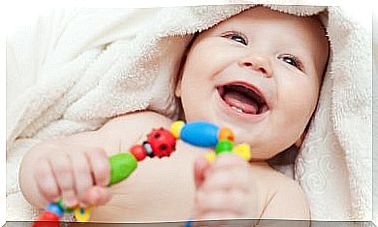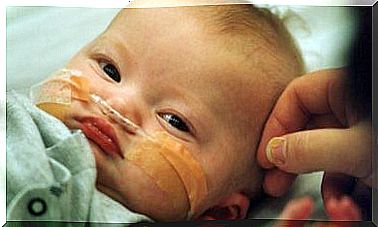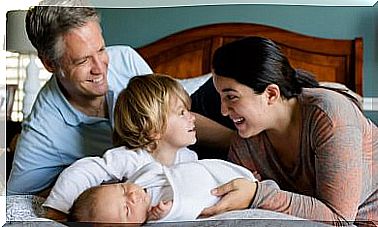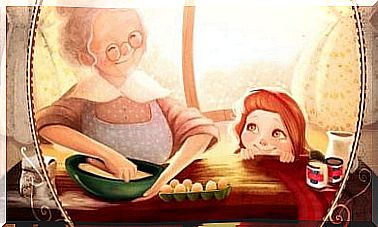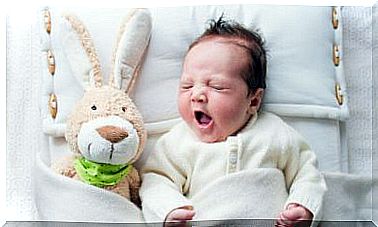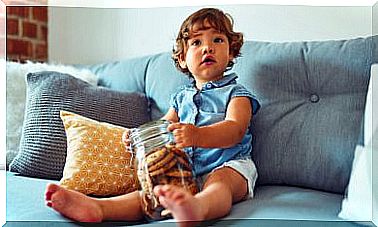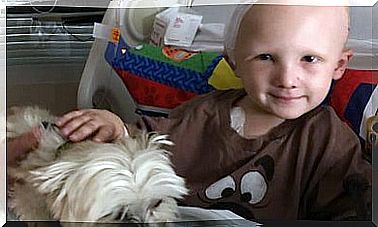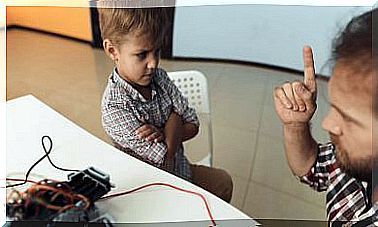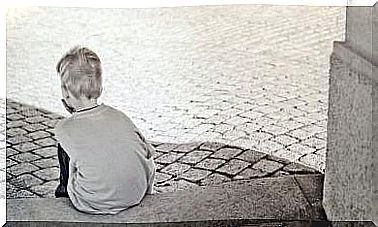How To Deal With A Child Burn?
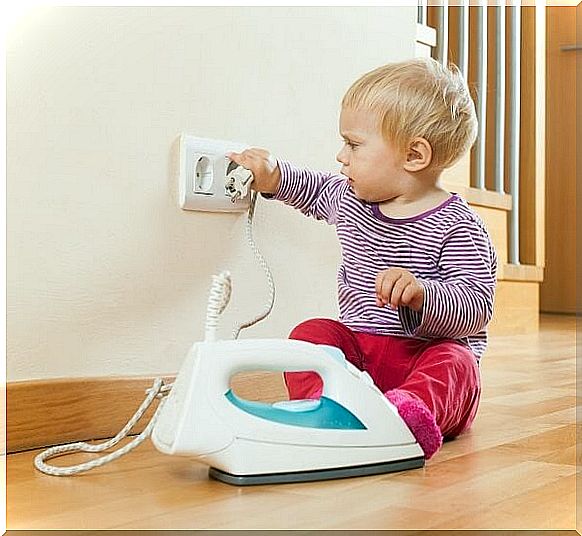
Child burn is one of the most common and painful injuries, so it is also the one that most terrifies every parent. This is a consequence of excessive exposure to a certain heat source, such as the sun, flames, explosions, the action of electrical agents and liquids at high temperatures.
Depending on the state of the infant burn, the degree of risk it represents will depend and, consequently, the need for the child to receive medical attention or be treated at home. However, the first step to take in the face of this circumstance is to assess the severity to act appropriately.
Pay close attention because in this You Are Mom article we will tell you what are the different degrees of childhood burns, in which cases it is necessary to go to the doctor and how to act if your child faces an accident of these characteristics.
How to evaluate a childhood burn?
Once the child is burned, we must carefully observe the appearance of the burn in order to assess whether it represents a level of severity for which to urgently go to the medical guard to receive the corresponding attention.
But it is essential to know, at least, how such a childhood burn occurred, the surface of the skin that was affected by said accident, the location of the injured area and the depth of the injury that the child presents.
- The extension. This variable is evaluated by measuring the injury with the palm of the child’s hand. To do this, keep in mind that the entire palm of the child’s hand is equal to 1%.
- The localization. The specialists consider areas of serious affectation to the face, the hands, the feet and the genital area. In addition, we talk about complicated burns when they occur around the child’s natural orifices (mouth, nose, anus, eyes, ear), joints and flexion areas.
- The depth. This parameter is measured based on the layers of the skin that were affected as a result of the creature’s burn.
Classification of burns
All childhood burns can be classified, based on these three characteristics of the wound, in the following three degrees:
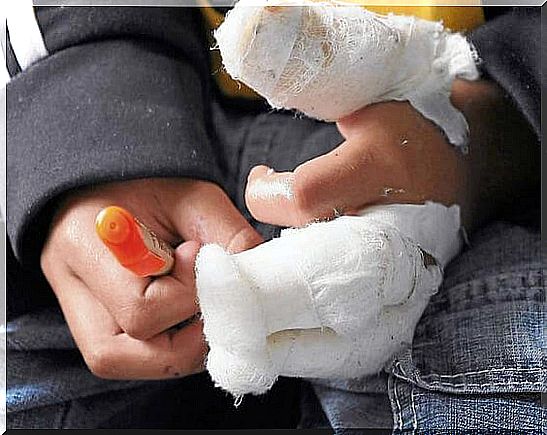
- First Degree or epidermal. This type of childhood burn, being produced by the sun and mild scalds, only affects the most superficial layer of the skin, so it is characterized by redness, inflammation and pain on contact without the formation of blisters. As it does not have complications when it comes to healing, they can be treated for 10 or 15 days at home without regretting sequelae.
- Second Degree, superficial or deep dermal. They affect both the epidermis and deep layers of the dermis, generating blisters or causing loss of epidermis. Depending on the characteristics of the infant burn, they require a specialized treatment of 10 to 20 days since they need care and sanitary control, as they are usually quite painful because the lesion is raw and with blisters with liquid content from the damaged tissues. If the burn is mild, the sequel is a change in skin color that disappears over time, and if it is severe it can cause scars and skin retractions.
- Third degree or subdermal. These burns usually affect the entire thickness of the skin, damaging subdermal structures (muscle and bone). They have a whitish, brown or black appearance and, because they destroy nerve endings, they are painless but require specialized treatment whose evolution is very slow. In general, it is also necessary to go to a surgical treatment and, even so, they leave important sequelae, both physical and psychological.
How to act before a child burn?
The minutes following the accident are of vital importance since the burn can continue to act on the tissues, which, if we do not stop it, increases the damage to the child’s body. The main thing is to move the boy away from the heat source and cool the burn with water at room temperature.
This clarification regarding water is pertinent since the liquid at low temperatures in this case reduces circulation to the area and, consequently, oxygenation of the tissue. It is also possible to use compresses soaked in physiological saline.
Another fundamental aspect to take into account in the event of a childhood burn is to urgently remove clothing that is easy to remove. That is, the one that appears to be attached to the skin should not be removed. If you want to dry your child after washing, do not rub the wound with the towel, pat it dry.
Treat small burns
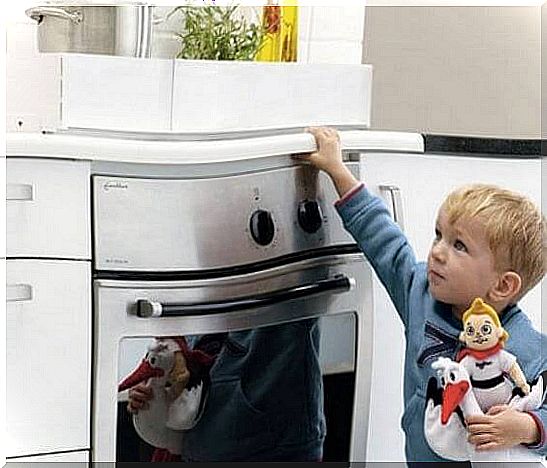
- Do not delay the assistance to the little burned, however slight it may seem.
- Cool the burned area with water to soothe the pain and prevent blisters.
- Do not apply ice, creams, butter, oil, toothpaste or any other home remedy.
- Do not explode the blisters, if they appear, since they protect the affected skin while it heals.
Treat large burns
- Place the child in the shower or bath and allow the wound to soak in cold (not ice) water for at least 10 minutes.
- Do not touch the burned part of the skin or apply creams, ointments or any home remedy.
- Do not remove clothing in case it adheres to the skin. In this case, it is advisable for doctors to remove clothing to avoid infection.
- Call medical emergencies.
- If the infant burn is uncovered, you can cover it with clean clothing, preferably cotton and without hair or fibers that can come off and stick to the wound.
- Do not offer food or drink to the minor.
- Control and monitor the appearance of any symptoms while waiting for the emergency service.
What not to do in any case?
In addition to the contraindications indicated above, there are other actions that paralyzed parents tend to do out of fear and anguish when faced with these cases, but should be avoided by all means since, ultimately, they are harmful to the affected children.
Therefore, it is essential that in no case and under no circumstances do the following:
- Offer water, alcohol, or pain relievers by mouth.
- Take off the clothes or any other element that is stuck to the child’s skin.
- Leave the baby alone. Even if you have to go for help, you should take your child for as long as his injuries allow.
- Douse the person’s flames with water. The fire must be put out by making the child roll or by covering them.
